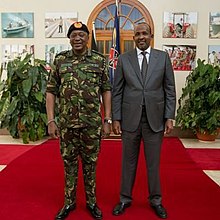
A part of Eastern Africa, the territory of what is known as Kenya has seen human habitation since the beginning of the Lower Paleolithic. The Bantu expansion from a West African centre of dispersal reached the area by the 1st millennium AD. With the borders of the modern state at the crossroads of the Bantu, Nilo-Saharan and Afro-Asiatic ethno-linguistic areas of Africa, Kenya is a truly multi-ethnic state.

The demography of Kenya is monitored by the Kenyan National Bureau of Statistics. Kenya is a multi-ethnic state in East Africa. Its total population was at 47,558,296 as of the 2019 census.

The Kikuyu are a Bantu ethnic group native to East Africa Central Kenya. At a population of 8,148,668 as of 2019, they account for 17.13% of the total population of Kenya, making them Kenya's largest ethnic group.
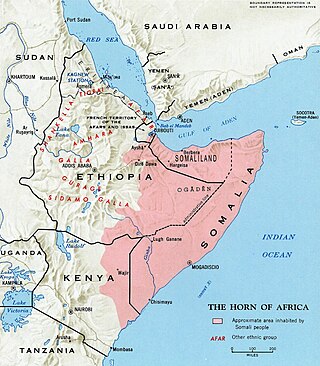
Greater Somalia is a concept to unite all ethnic Somalis comprising the regions in or near the Horn of Africa in which ethnic Somalis live and have historically inhabited. The territory historically encompassed British Jubaland Province, British Somaliland, Italian Somaliland, parts of French Somaliland, the Somali Region in Ethiopia, the Northern Frontier District in Kenya, and the intra-46th meridian east territories. At the present, it encompasses Somalia proper, Jubaland, southern and eastern Djibouti, the Somali Region and Dire Dawa in Ethiopia, and the Garissa, Wajir and Mandera Counties in Kenya.

The North Eastern Province is one of the former provinces of Kenya. It had a land area of 127,358.5 km2, with its capital at Wajir. The North Eastern Province was carved out of the then Northern Frontier District (NFD) prior to independence.

The Luo of Kenya and Tanzania are a Nilotic ethnic group native to western Kenya and the Mara Region of northern Tanzania in East Africa. The Luo are the fourth-largest ethnic group (10.65%) in Kenya, after the Kikuyu (17.13%), the Luhya (14.35%) and the Kalenjin (13.37%). The Tanzanian Luo population was estimated at 1.1 million in 2001 and 3.4 million in 2020. They are part of a larger group of related Luo peoples who inhabit an area ranging from South Sudan, southwestern Ethiopia, northern and eastern Uganda, southwestern Kenya, and northern Tanzania.
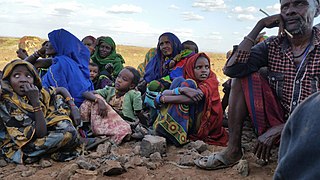
The Rendille are a Cushitic-speaking ethnic group inhabiting the northern Eastern Province of Kenya.
The Garre are a prominent Somali clan that traces its lineage back to Samaale, who is believed to have originated from the Arabian Peninsula through Aqiil Abu Talib. The Garre clan is considered to be a sub-clan of the Digil-Rahanweynl clan family, which is part of the larger Rahanweyn clan. However, genealogically, they are descended from Gardheere Samaale. The Garre are also categorized as southern Hawiye as well.

Garissa is the capital of Garissa County, Kenya. It is situated in the former North Eastern Province.

The Orma is one of the Oromo clans in the Horn of Africa who predominantly live in Tana River County in northern Kenya and in southern Ethiopia. They share a common language and cultural heritage with Oromo clans. First and foremost they are pastoralists and almost all are Muslims. In 2019 the Orma numbered 158,993.

Eastleigh is a mixed-use neighbourhood in Nairobi, Kenya. It is located east of the central business district. It is known for its business prowess as well as "its poor infrastructure.

The Bajuni people are a Bantu ethnic group who live primarily in the Bajuni Islands of Somalia and coastal areas between the port city of Kismayo and the city of Mombasa in Kenya. They relocated from Shungwaya (Somalia) to their current location due to war with Cushitic groups, who drove them out from their ancestral territory.
The Somali Bantus are a Bantu ethnic minority group in Somalia who primarily reside in the southern part of the country, primarily near the Jubba and Shabelle rivers. The Somali Bantus are descendants of enslaved peoples from various Bantu ethnic groups from Southeast Africa, particularly from Mozambique, Malawi, and Tanzania. The East African slave trade was not eliminated until the early parts of the 20th century.
The North Frontier District (NFD), or Northern Frontier Province, or simply Northern Frontier was one of the regions of British Kenya. Originally, the NFD covered the northern region of East Africa Protectorate later succeeded by British Kenya, it later included half of the Jubaland province that remained as part of Kenya when the other half was ceded to the Italian Empire.
The Shifta War or Gaf Daba (1963–1967) was a secessionist conflict in which ethnic Somalis in the Northern Frontier District (NFD) of Kenya attempted to join Somalia. The Kenyan government named the conflict "shifta", after the Swahili word for "bandit", as part of a propaganda effort. The Kenyan counter-insurgency General Service Units forced civilians into "protected villages" as well as killing livestock kept by the pastoralist Somalis.

The Bimaal or Bimal, is a sub-clan of the major Dir clan family. This clan is widely known for leading a resistance against the colonials in southern Somalia for decades which can be -in a little way- compared to the war of the Sayyid in Somaliland. The Biimaal mainly lives in southern Somalia, the Somali region of Ethiopia, which their Gaadsen sub-clan mainly inhabits and in the NEP region of Kenya.
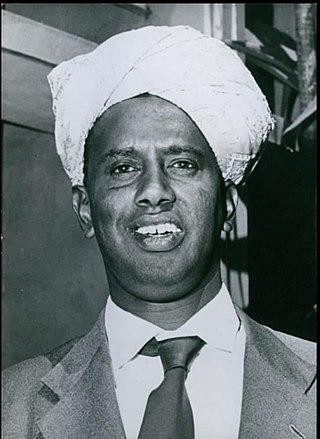
Ali Adan Lord (1915-1961) became the first Somali MP and later the Interior Minister of Kenya. As Interior Minister, Lord included along with Jomo Kenyatta the state delegation that went to Mogadishu during President Sharmaake’s term.
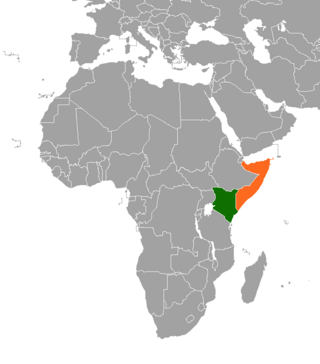
Kenya–Somalia relations are bilateral relations between Kenya and Somalia.

The Somali–Kenyan conflict has been an issue within Kenya since the colonial period. Problems have ranged from skirmishes between the two communities and have led to terrorist attacks, police harassment, extortion, home invasions, physical violence, and massacres perpetrated against Somalis and Kenyans.

Jubaland, the Juba Valley or Azania, is a Federal Member State in southern Somalia. Its eastern border lies 40–60 km (25–35 mi) east of the Jubba River, stretching from Gedo to the Indian Ocean, while its western side flanks the North Eastern Province in Kenya, which was carved out of Jubaland during the colonial period.



